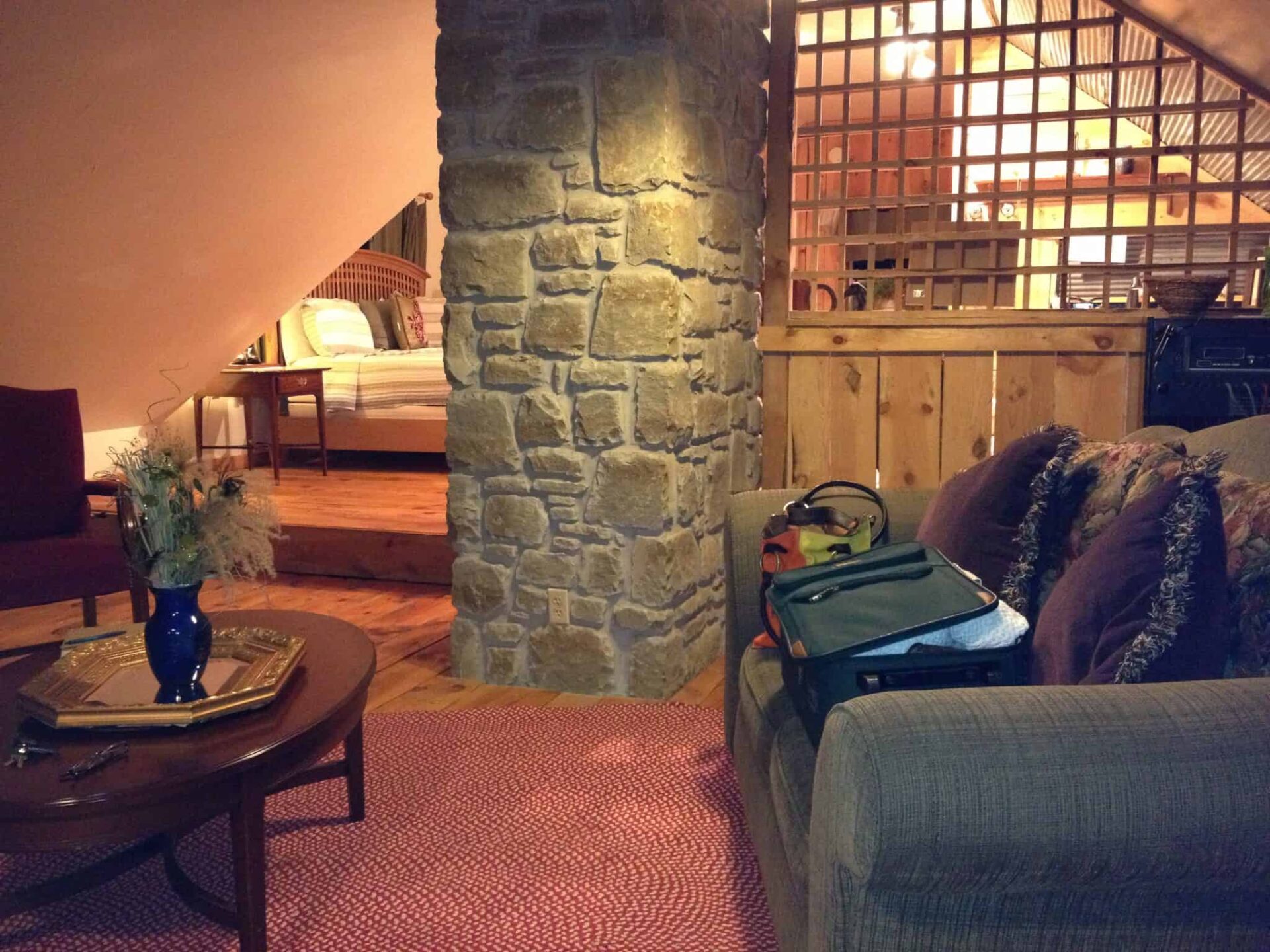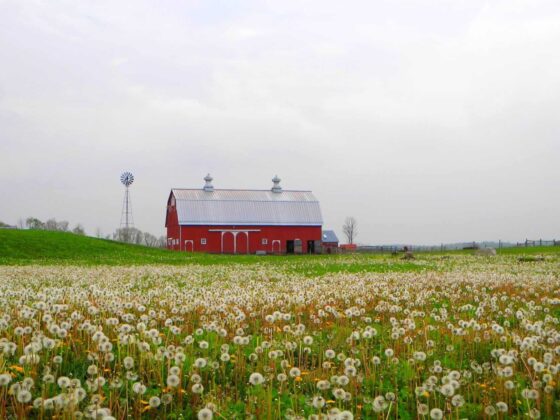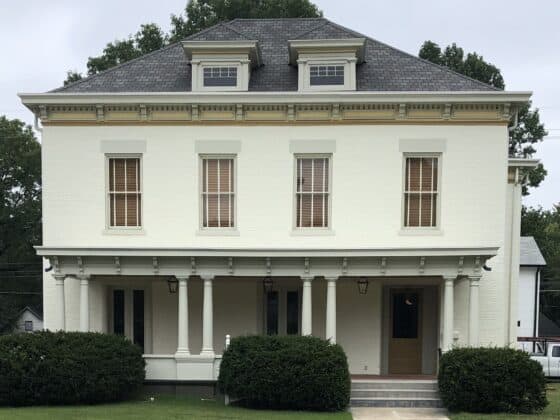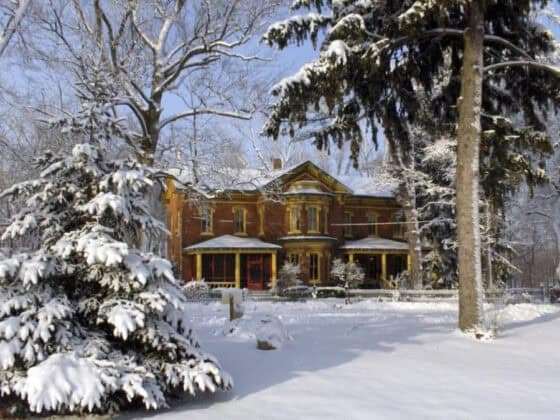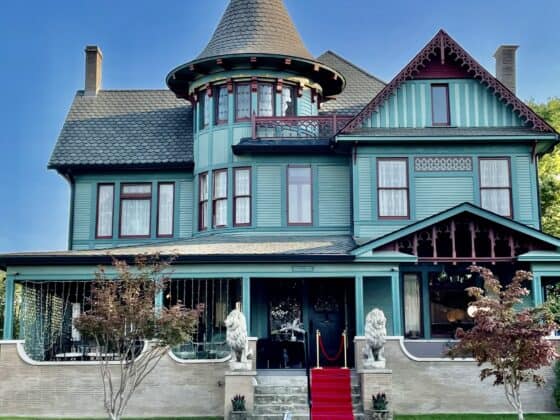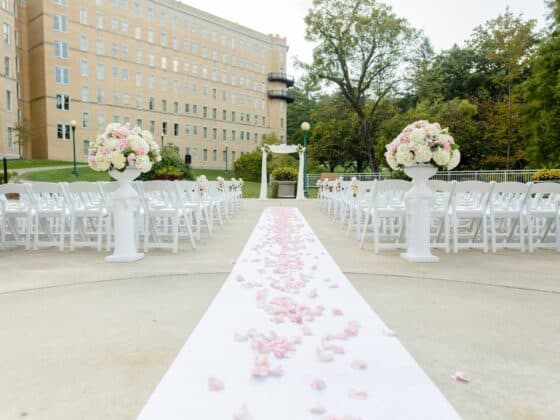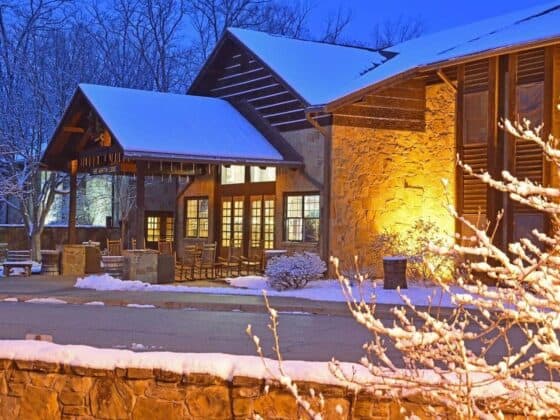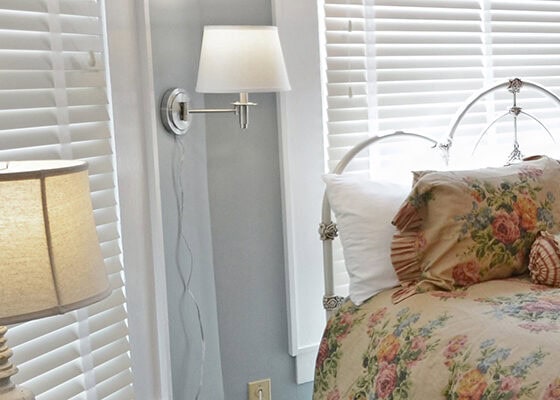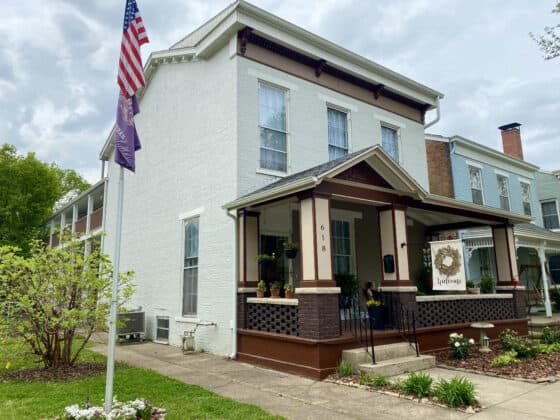By Jane Ammeson
Boutique hotels, smaller and distinctive in setting and style, offer guests a unique experience and ambience. Once the province of large cities, now boutique hotels are opening up in small cities and towns throughout Indiana. Their purpose not only includes quality and service, but also ways to save historic buildings and preserve the character of a neighborhood.
Located in the heart in downtown Wabash, the 30-room Charley Creek Inn harkens back to 1920s and the city’s heyday as a bustling railroad hub. When the Georgian Revival-style hotel first opened, travelers favored its sophistication and luxury and it flourished, as the Indiana Hotel, for decades. Lovingly restored in 2010, the Charley Creek Inn is credited with being a major force in the revitalization of the city’s 19th century downtown. The stunning two-story lobby is all crystal chandeliers, graceful period furniture, arched doorways, vintage wallpaper and the sumptuous feeling that emanates from the gilded feel of the past. All this historic grandeur earned it the Cook Cup for Outstanding Restoration, the highest award for historic renovation in Indiana.
But history isn’t a drag here. Though each of the inn’s 30 rooms features custom designed furniture reflecting French, Victorian and Regency styles, antique furniture and luxurious comforters perfect for serious snuggling, there’s such tech upgrades as large flat-screen televisions, individual climate controls and free cable.
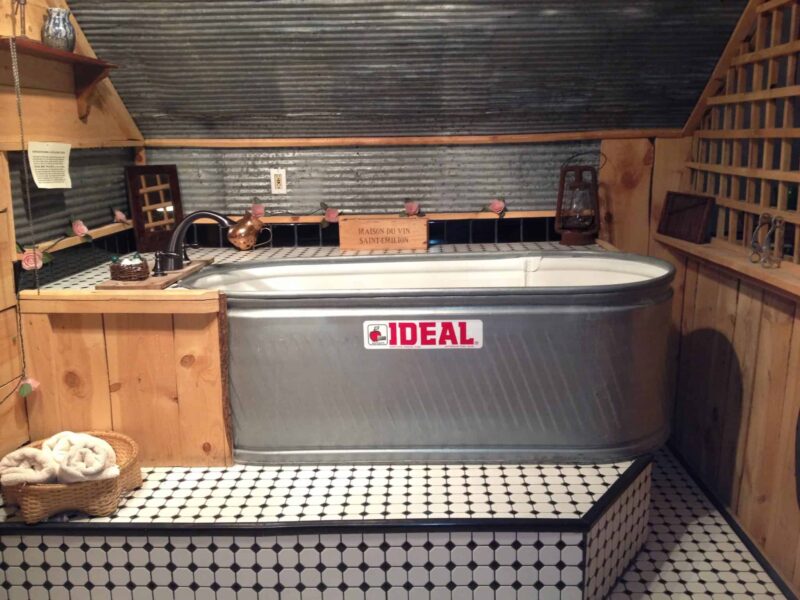
Over-indulge at Twenty, the inn’s restaurant where farm to fork contemporary cuisine is on the menu or The Ice Cream & Candy Shoppe and The Wine & Cheese Shoppe located in the inn’s shopping area. Then take advantage of the complimentary use of the Wabash County YMCA just a few blocks away.
When I stopped by The North End in downtown Roanoke, the pleasant young woman in their upscale boutique said owner Karima Davis was on a buying trip in Europe for items for the store and the two spacious suites upstairs—West End and East End. So I walked a few blocks down the street to Joseph Decuis, the award-winning restaurant owned by good friend Alice Eshelman to get the scoop.
“It’s such a beautiful women’s boutique and hotel isn’t it?” says Eshelman who herself owns the Joseph Decuis Farmstead Inn, a delightful 1884 farmhouse and carriage house restyled into six sumptuous overnight suites. It’s located across the road from the farm where she and her husband Pete raise the Wagyu cattle, Rainbow Dixie and Naked Neck chickens and prized Mangalitza hogs that are served at the restaurant and also sold at the Joseph Decuis Emporium next door.
Both the East and West offer large luxury master suites and the West End goes one step further with a separate living room, full kitchen and entertainment center. The décor? As one might expect from an owner who is touring Europe–European high-end furnishings in an understated décor.
If the Charley Creek Inn and the North End are moored in the last century, step back even further in time to 1816 when Daniel Brown built a three-story home in Rising Sun overlooking the Ohio River. Now the Empire House Hotel, it was a private residence for 50 years though Brown also operated a general store and upper floor served as a Masonic Lodge there as well. From 1885 to 1920 the Schroeder family operated a restaurant and hotel there. Other uses included both a tavern and church—indicating it was quite a versatile location. Part of the Rising Sun Historic Downtown District, the second floor balcony is a wonderful spot to sit out and watch the passing boat traffic. Nearby is the Rising Sun Casino Resort.
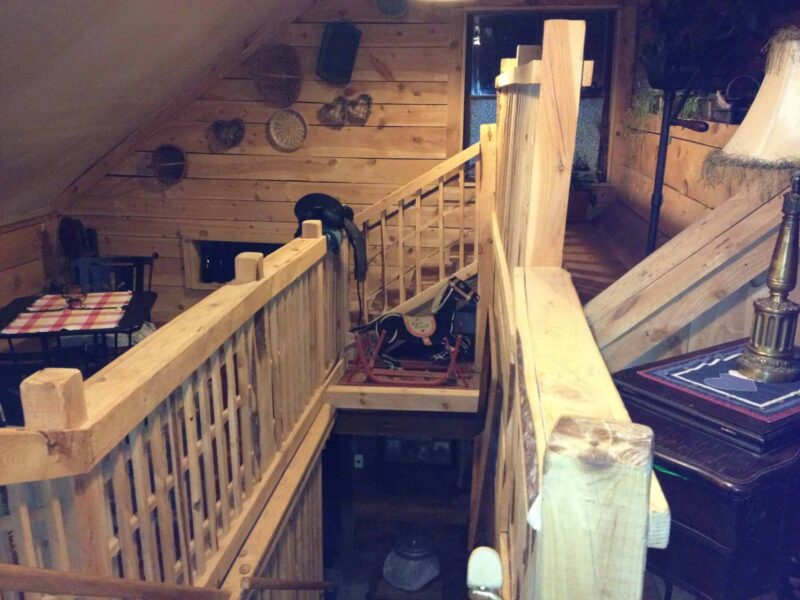
“It was called the Empire House Hotel when it first opened,” says Marsha Loudon, a retired teacher who bought the Empire 11 years ago from a couple who had begun extensive renovation. Still marveling that her hotel is 201 years old, she says people get a kick out of the different decors and era styles of the rooms.
“It’s a blend and it’s comfortable, like going to grandma’s house,” says Loudon noting that her hotel dates back to the same year that Indiana became a state.
And at the Story Inn in southern Indiana “you can choose between two types of rooms—restored and renovated,” says Rick Hofstetter, majority of the Inn, located in Story, a charming 19th century village surrounded by both Brown County State Park and the Hoosier National Forest.
Of the 14 guest accommodations available, the home of Doc Story is among those providing a complete step back into time. Built by George Story, a country doctor who founded Story in 1851, Hofstetter describes the two-story country Victorian-style house as almost identical to how it was back in Doc’s day. Even the hand water pump in front still works, though Hofstetter is quick to point out that they now have indoor plumbing and electricity.
“Built that same year, the grain mill is a renovation,” says Hofstetter. “Where the grain hoppers were is now the spot for a king-sized bed and a 250-gallon horse trough enameled on the inside is a bathtub.”
But the idea of a farming community feasting on what they grow, endures.
“In the mornings you can see our chef walk the kitchen and go out into the garden to pick tomatoes, grapes, strawberries or whatever else is in season,” says Hofstetter. “That’s the way it would have been 150 years ago.”
Charming Corydon, once the Indiana State Capitol and the site of the only Civil War battle in Indiana when Confederate General John Hunt Morgan and his Raiders crossed the Ohio River and began their plunder of the small towns in the southeast, has long been home to the Kintner House Inn. First built around 1831 by Jacob Kintner, business was so good, he decided to go ritzy and built an elegant new hotel. Fire destroyed that one and in 1873 he tried again with the Kintner House Inn. The exterior is so pretty it’s been featured on two Hallmark Christmas cards. The inside is steeped in Victorian era charm, with both an organ and piano in the parlor and bedrooms with fringed lampshades, tasseled curtains and antiques. You’ll find such antiques as an eight-foot tall Flame Mahogany armoire, a walnut dresser with pink marble top, inlaid star patterned game table, and 1850s’ eight-foot-tall hand-carved walnut bed.
“People can walk in here and feel like guests must have felt more than 100 years ago” says Dee Windell, innkeeper at the Kintner House Inn, which is on the National Register of Historical Places.


